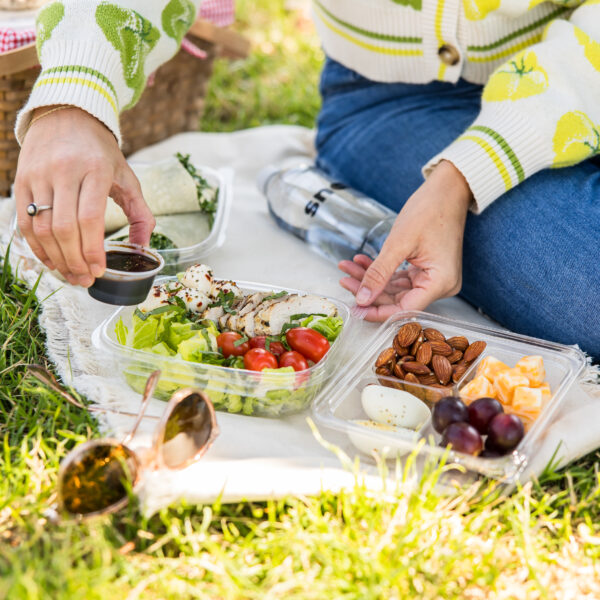Looking for something to eat for breakfast while waiting for your next Snap Kitchen box? In celebration of National Egg Day, we’ve put together a guide on all the ways you can cook and eat eggs!
Types of Eggs
The most common type of egg Americans enjoy with their morning coffee is chicken eggs, but duck and quail eggs are also a yummy option! Check out your local grocery store and give them a try – you just might find your new favorite!
Popular Ways to Cook Eggs
Sunny-Side Up
This one’s a classic – all it takes is a little oil or butter and a few minutes of your time. Just crack an egg into a skillet with your fat of choice and wait for the white to solidify. You can also add a lid to the pan to speed up the cooking process if you’d like!
Over Easy
For perfectly gooey, runny eggs to put on your sandwiches or enjoy with a piece of avocado toast, simply follow the same method as sunny side up and flip before the white cooks all the way through. This creates a pocket of cooked egg white that holds the yolk.
Scrambled
When all else fails, go with scrambled eggs. You can make these intentionally by whisking a few eggs with milk and seasonings before adding them to your greased pan, or unintentionally when you accidentally crack the yolk of your sunny side up – it happens to the best of us!
Hard-Boiled
Bring a pot of water to a boil before adding the eggs for the most consistent results. Eggs are considered hard-boiled after cooking for 8-10 minutes. Once your eggs are cooked, let them cool before peeling and enjoying. But there are lots of great methods for hard-boiling eggs! You can even use your InstantPot. And pro-tip: If you dip your eggs into an ice bath (just some ice and water in a bowl!) for 5-10 minutes as soon as they’re done cooking, they’re easier to peel.
Soft Boiled
When making soft-boiled eggs, only boil your eggs for 4-6 minutes and move them into an ice bath to stop the cooking process. You’ll have to be more careful peeling these than hard-boiled eggs since the center of the egg is still soft and liquidy.
Poached
Not for the faint of heart, poached eggs are a tricky breakfast to pull off. These are essentially soft-boiled eggs cooked without the shell. Some people suggest swirling your pot or adding vinegar to the water to make the process easier, but the best hack we have is simply cracking your egg into a plastic wrap pouch and dropping the whole thing into your boiling water to cook to taste.
Omelettes
Omelettes are so popular all around the world because they’re completely customizable! You can opt to whisk your eggs and cook them into a plain round disc or add toppings and mix-ins like cheese, veggies, and meat. You can enjoy a fluffy omelette as a round, folded in half, or rolled up.
Health Benefits of Eggs
Not only are eggs delicious, they’re also nutritious! Here are a few of their many health benefits:
- Eggs are a source of complete protein that’s highly bioavailable (easy for your body to digest and absorb)
- High in selenium, phosphorus, and choline
- Rich in Vitamin D and Vitamin B12
- Rich in antioxidants
- Help lower triglycerides, increase HDL, and reduce the risk of stroke
Heart-healthy, affordable and satisfying – what more could you ask for? Learn more about how you can live your healthiest, happiest life by lowering your cholesterol and getting enough protein on the Snap Blog.





Leave a Reply
No Comments